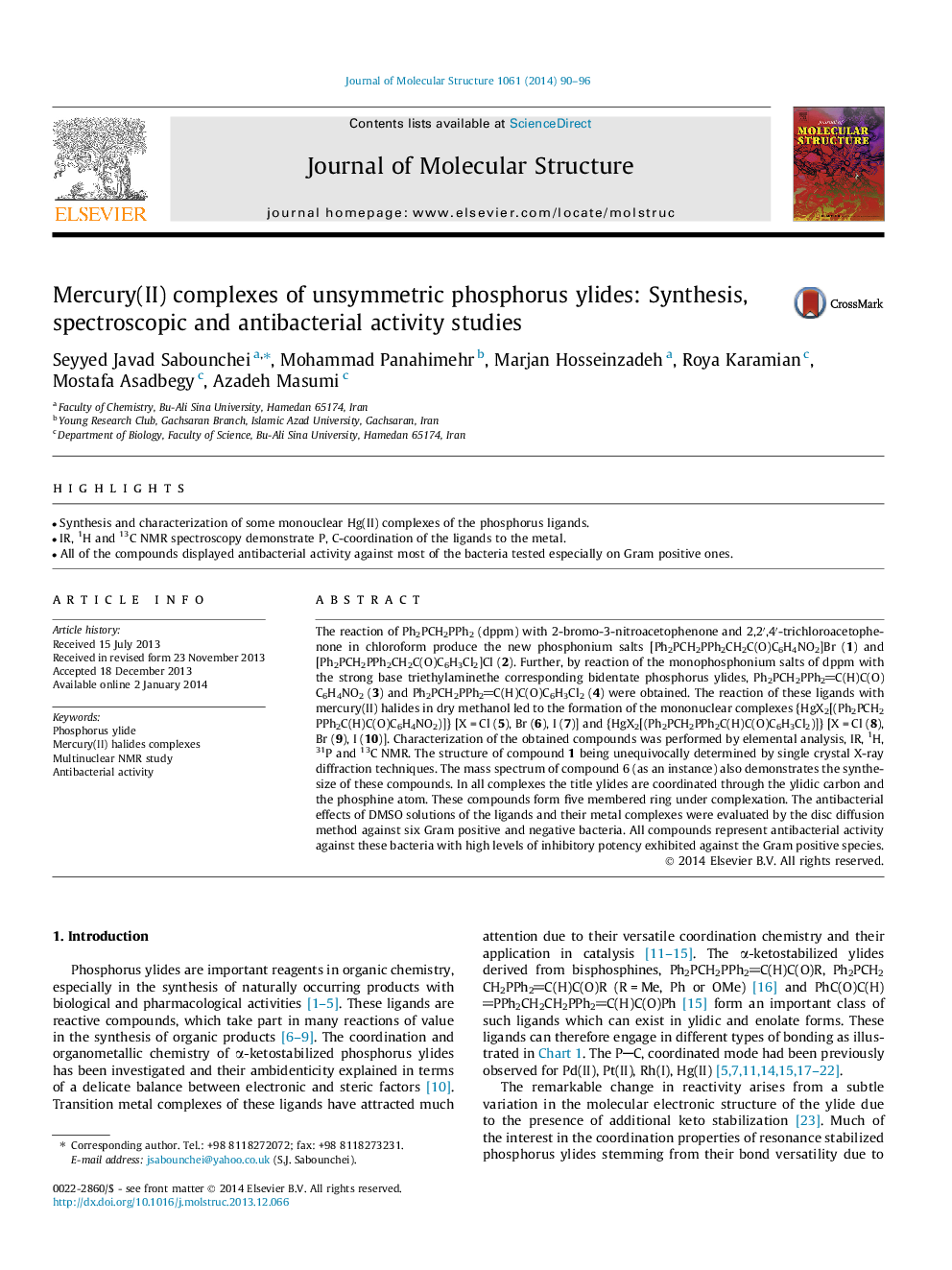| Article ID | Journal | Published Year | Pages | File Type |
|---|---|---|---|---|
| 1402781 | Journal of Molecular Structure | 2014 | 7 Pages |
•Synthesis and characterization of some monouclear Hg(II) complexes of the phosphorus ligands.•IR, 1H and 13C NMR spectroscopy demonstrate P, C-coordination of the ligands to the metal.•All of the compounds displayed antibacterial activity against most of the bacteria tested especially on Gram positive ones.
The reaction of Ph2PCH2PPh2 (dppm) with 2-bromo-3-nitroacetophenone and 2,2′,4′-trichloroacetophenone in chloroform produce the new phosphonium salts [Ph2PCH2PPh2CH2C(O)C6H4NO2]Br (1) and [Ph2PCH2PPh2CH2C(O)C6H3Cl2]Cl (2). Further, by reaction of the monophosphonium salts of dppm with the strong base triethylaminethe corresponding bidentate phosphorus ylides, Ph2PCH2PPh2C(H)C(O)C6H4NO2 (3) and Ph2PCH2PPh2C(H)C(O)C6H3Cl2 (4) were obtained. The reaction of these ligands with mercury(II) halides in dry methanol led to the formation of the mononuclear complexes {HgX2[(Ph2PCH2PPh2C(H)C(O)C6H4NO2)]} [X = Cl (5), Br (6), I (7)] and {HgX2[(Ph2PCH2PPh2C(H)C(O)C6H3Cl2)]} [X = Cl (8), Br (9), I (10)]. Characterization of the obtained compounds was performed by elemental analysis, IR, 1H, 31P and 13C NMR. The structure of compound 1 being unequivocally determined by single crystal X-ray diffraction techniques. The mass spectrum of compound 6 (as an instance) also demonstrates the synthesize of these compounds. In all complexes the title ylides are coordinated through the ylidic carbon and the phosphine atom. These compounds form five membered ring under complexation. The antibacterial effects of DMSO solutions of the ligands and their metal complexes were evaluated by the disc diffusion method against six Gram positive and negative bacteria. All compounds represent antibacterial activity against these bacteria with high levels of inhibitory potency exhibited against the Gram positive species.
